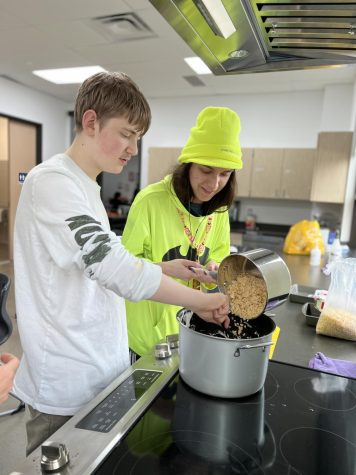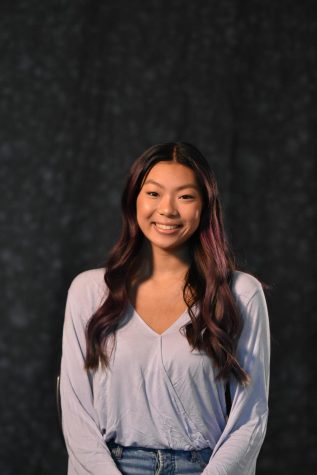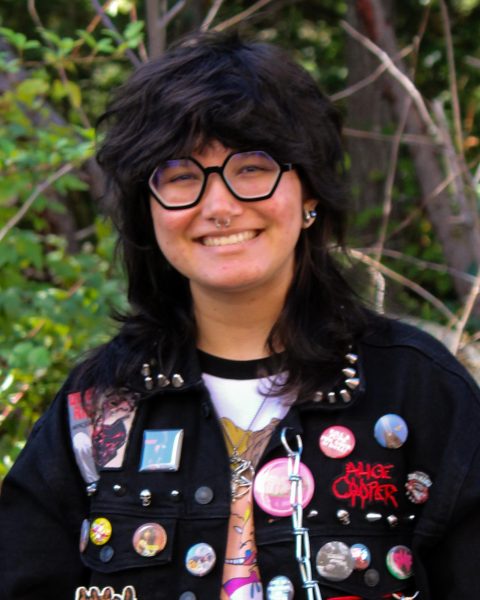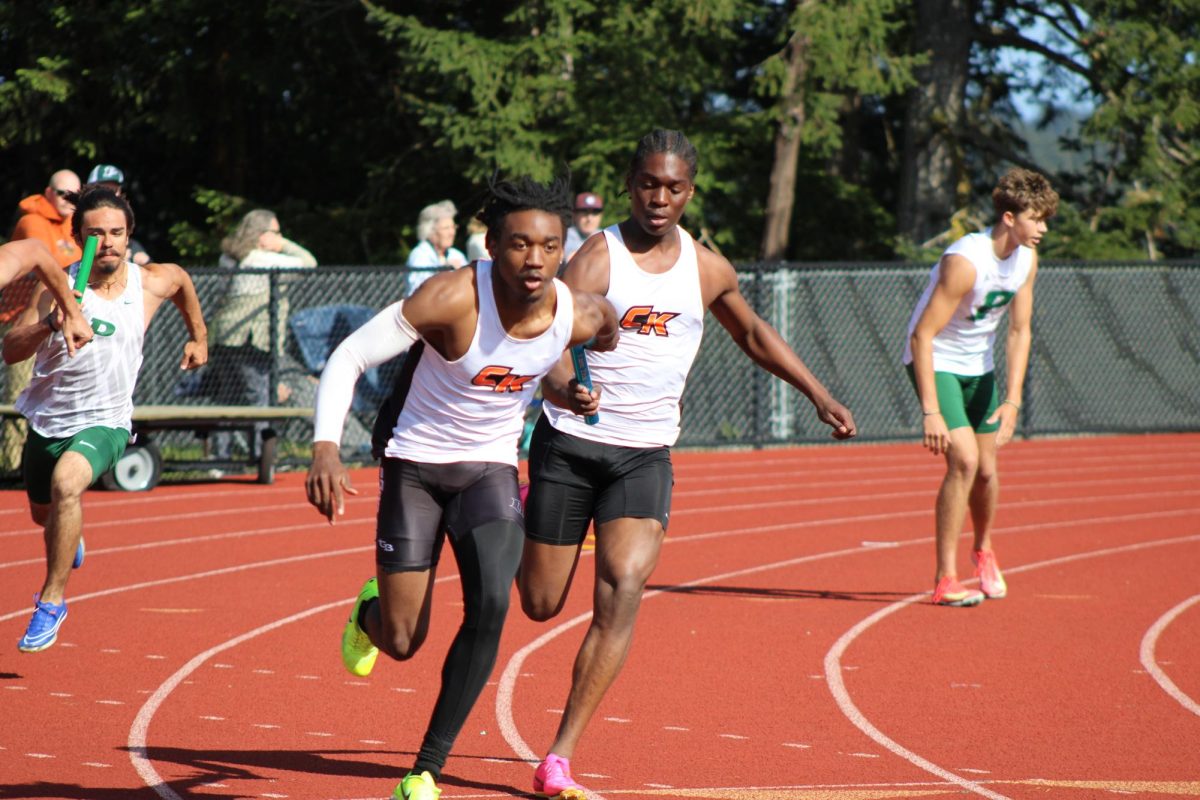How Much Do You Know About CKHS’ Disability Culture?
Ignorance Regarding Disabilities Negatively Affect Educational Standards and Perceptions of Disabled Students.
Wyntrene Mace, a Para-2 who specializes in working with students with greater behavioral, educational, or medical needs, cheers in excitement as students correctly answer their work.
This is the 28th year the United States has recognized the month of March as National Developmental Disabilities Awareness Month.
Originally signed into effect on Feb. 26, 1987, former President Ronald Reagan acknowledged in Proclamation 5613 that a sizable portion of about four million citizens had a developmental disability. Since then, this number has exponentially increased.
Today, over 61 million adults in the United States have a disability, accounting for 26% of the adult population nationally. Additionally, the World Health Organization (WHO) has reported that one billion people live with a form of disability globally.
Recent studies and data collected by the American Academy of Pediatrics (AAP), Centers for Disease Control and Prevention (CDC), and United Nations Children’s Fund (UNICEF) have all documented trends of rapid increase in disability in the United States and worldwide.
This incline has mainly been accredited to populations aging and becoming more vulnerable to chronic disease, encapsulated by a phenomenon referred to as the “graying of America”. As time progresses, the American population is becoming older on average.
Adults, however, have not been the only demographic affected. According to UNICEF, about 240 million children have disabilities, a frequency of one in ten children. Of all public school students, 14% receive special education services under the Individuals with Disabilities Act (IDEA).
IDEA was first enacted in 1975, mandating school districts to provide “free appropriate public education” to students ages 3-21 who qualify. Eligible students must fit into one of 13 disability categories, ranging from intellectual and specific learning disabilities (dyslexia, dyscalculia, written expression disorder) to physical impairments like deafness or blindness.
Disability in the Central Kitsap School District
The Central Kitsap School District offers a variety of special education programs. Students may be placed in the district level self-contained program, where they are able to work on academic and life skills in a structured setting.
Placement into any special education program is usually determined by the student’s evaluation and Individualized Education Program (IEP) team. An IEP is a support plan that is personalized to a student’s performance, needs, and goals. In order to get an IEP, the student must fit into one of 13 disability categories under the IDEA.
An IEP may include individualized instruction, the student’s present level of performance, specific supports such as assistive technology, and annual goals. Students in the special education program must have an IEP.
Alison Graham, special education teacher, has been teaching the self-contained program at Central Kitsap High School in Room 1205 for four years.
“I fell in love with the people who are the students in these classrooms,” said Graham.
“They are some of my favorite people I have ever met in my life, and we just have a great time. They love learning. Watching the kids get off the bus in the morning to come to school is amazing because they are so happy to be here.”
The special education program teaches students a range of subjects that debrief basic math, reading, history, science, and even social skills.
Kail-Adora Frigillana, a freshman student in the CK special education program, states that real-life experiences are implemented into the program’s subjects. Cooking, cleaning, and money managing are a few of the many real-life skills that students learn.
“Well, we [mostly] do math games,” said Frigillana. “We do math which is fun, and you interact with other people.”

Field trips are an important way that the special education program allows students to get involved in the community and learn more than just school-related topics. Every Wednesday, special education students are out for the day going to a variety of locations such as the Naval Undersea Museum, Clear Creek Trail, and the Bremerton Bug and Reptile Museum.
Most recently, the special education department took a trip to the Bremerton Bug and Reptile Museum. Frigillana said that they saw preserved butterflies, spiders, and reptiles while also learning about their different species.
“We learned about the snakes’ names because we didn’t know their names,” said Frigillana.
Upperclassmen and post-graduate students may be eligible for the Secondary Life Skills program, instructed by Dora Harris in Room 1209. Similarly to the self-contained program, students pursue academic goals while primarily working towards daily living and community access.
Many special education students ages 16-21 are provided with internships, job placements in the community, and work experience with the help of the district’s Youth Employment Preparation Program (YEPP).
Unification of Special-Ed and General-Ed Students

The CKHS Unified Champions Club was started by two general education students in the 2020-21 school year, which was heavily supported by the Executive Associated Student Body.
The club took off after its approval and became a space for general education as well as special education students to collaborate and find a sense of belonging with each other. The year that Unified Champions was established was the same year that the CKSD district held remote learning.
Since the start of the 2021-22 school year, the Unified Champions Club has not gotten much traction. So far, around 15 special-ed students from Graham and Harris’ classrooms attend the club.
Unified Champions is held every other Tuesday after school in Ms. Graham’s Room 1205. Attendees often do food activities, play outside, or learn about a fun new topic. The Unified Champions Advisor is Ms. Graham, who strongly encourages any general-ed students to swing by and join.
Robin Bailey, the Department Chair for Special Education and a moderate disability special education teacher that focuses on life skills, math, and social studies, further expresses the urge for general education students to join the Unified Champions Club.
“I’d like to see more people be involved in it,” said Bailey. “Because part of you being in Unified is working with other kids with disabilities and then understanding them.”
Disparity Between General Education and Special Education Standards
CK’s motto “Dedicated to Excellence,” centers around educational prestige and distinction, especially when considering the number of AP and honors courses offered. Bailey states that the school’s distinguished attention on general education tends to leave out students in the special education program.
“I feel like this school is very focused on advanced placement, academics, and doing honors classes,” said Bailey. “And while I think our students are really capable of being challenged that way academically, there is not a lot of professional development and teaching around how to accept the realities of response from our students.”
From a social perspective, the school environment creates a space where disabled students and teachers recognize ableism, whether or not the actions are direct. Regardless of the varying levels on the spectrum that students are in, the climate regarding ableism is apparent.
“Indirectly and systematically my kids feel that they are in classes for kids with disabilities, and even though it’s not physically shown in a lot of them, I think that they realize that people look at them differently,” said Bailey.
Disability Education and Awareness
There has been scarce disability education and awareness at Central Kitsap High School, despite almost 150,000 students in Washington State receiving special education services.
Andrea Romano, teacher at CKHS, has been teaching American Sign Language for 11 years. Lately, she has progressively been getting more and more deaf and hard of hearing students in her classroom.
“Just recently we’ve been talking about their hearing aids and cochlear implants, it’s a surgical procedure,” said Romano.
“And so, you know, this is really impacting them right away when they’re trying to make these decisions. We talk a little bit about identity like, ‘Who am I? Am I a hearing person? Am I a deaf person who only uses sign language? Where do I fit if I fall in the middle’? So those are really exciting conversations and having people who are experiencing that in the classroom is really good for the whole class.”
During each month of the school year, the Executive ASB’s Diversity Committee promotes certain minority groups by displaying educational posters and digital media around the school.
Despite efforts to display educational media in the previous years, there has been little to none, except for efforts made by clubs.
Bailey states that she has not seen much disability education provided by the district or school, and she would love to see more. Bailey feels that students would benefit from learning and being more aware of disabilities.
“I think people have a lot of questions about what autism looks like,” said Bailey. “You know what it is like to be a person with autism or, you know, for some of our other kids like what’s it like to have ADHD to the point where your learning has been really difficult for you. Or some of the others, like, what’s it like to have a social emotional disability. I think that would be really great for us to be able to do.”
Ableism at CK

Many students with disabilities at Central Kitsap High School are mocked, and with the rise in CKHS burner accounts, special-ed students are facing ridicule online as well. Graham has had to work with the school to take these down.
“[There] are a lot of assumptions about our students that aren’t necessarily accurate or right,” said Graham.
“A lot of people think they have to do things for our students, when our students can do many, many things on their own, but they might not do it as fast as we would want them to. So it’s making sure you allow them time to work through the process, and wait them out, and understand that it is going to take a little bit longer.”
Devon Bunt, Senior, a third year special education student, feels that him as well as other special education students in the program are being judged. Bunt recognizes the differing treatments that he receives compared to general education students.
“Maybe, don’t look at us like we’re weird and stuff,” said Bunt.
Bailey further expresses frustration with the ramifications that special education students face due to ableism. Bailey said that disabled students know that they are looked at differently, which makes it difficult to grapple with being disabled and wanting to be a part of the “normal” world.
More than 1 million employment discrimination complaints have been filed with the government since 2010. In 82% of these cases, the employee did not receive any form of relief. In less than 2%, an investigation was completed and a “reasonable cause” was issued determining that discrimination had occured.
Romano, who previously worked as a certified interpreter, has even been in positions where she has had to interpret discriminatory things.
Bailey believes that the school and district is steadily becoming more inclusive of the diverse amount of people at CK, including disabled students. However, moving forward, Bailey would prefer to see implementation of special education students in the general education classroom.
“I would like to see there be a way to structure classes so that our students could also benefit and learn,” said Bailey. I know that’s a really big ask, and I’m willing to help work on that with them.”
From a special education student’s perspective, Bunt wants the school to promote kindness towards disabled students. Students and teachers said that disabled students often feel the negative stigma against special education students, however, they want to change that by being recognized for more than their disability.
“I want to see [teachers] come and get to know our students.” said Ms. Graham. “Come and say hi, come visit, meet them and learn their names, because they will always look to talk to anybody, and having that social interaction is really important for our growth. Don’t be afraid to interrupt, or feel like you’re bothering them or doing anything. Interrupting is important. It’s part of what we’re learning. So do it, I encourage it, you know, bother us!”




